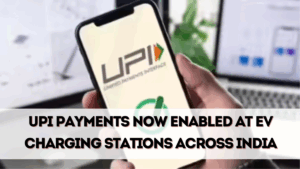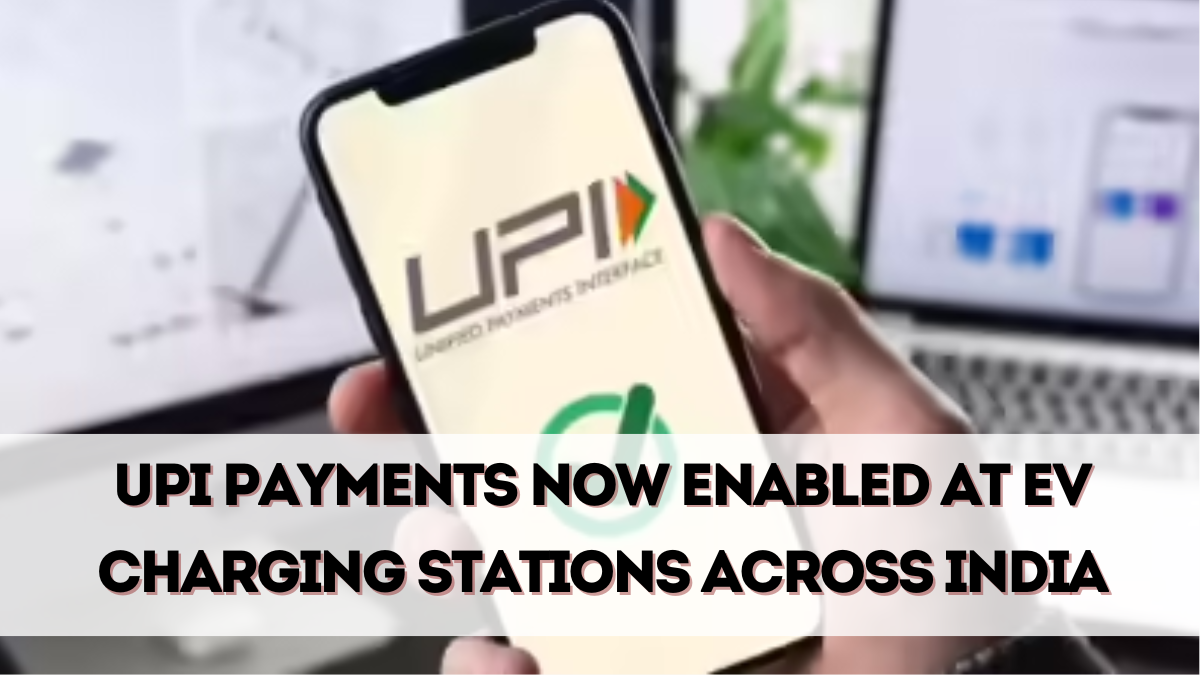Starting October 2025, electric vehicle owners across India can now pay for charging sessions using UPI and QR codes. This move integrates India’s most popular digital payment system with the country’s growing EV charging network, making transactions faster and more convenient.

Why UPI for EV Charging?
Until now, most EV charging stations required payments via wallets, apps, or debit/credit cards.
These systems often caused problems such as:
-
Failed transactions due to app glitches.
-
Limited wallet compatibility.
-
Higher processing fees for card payments.
By introducing EV charging via UPI India, the government and private operators are ensuring universal and seamless payment access.
How the New Payment System Works
The new system is straightforward for users.
-
At the charging station, a QR code is displayed on the machine.
-
Drivers scan the QR code using any UPI-enabled app such as Paytm, PhonePe, or Google Pay.
-
Enter the desired amount or select a charging package.
-
Confirm payment with UPI PIN.
-
Charging session begins automatically.
This process makes EV charging as simple as paying for groceries or fuel.
Nationwide Rollout in October 2025
The integration officially started in October 2025 and covers:
-
All new public charging stations set up by government and private players.
-
Existing stations being upgraded with QR payment support.
-
Highways and expressway chargers under NHAI.
By early 2026, nearly every EV charging station in India is expected to support UPI payments.
Benefits for EV Owners
The system brings multiple benefits for consumers.
-
Universal Access: Works with any UPI app linked to a bank account.
-
No Wallet Limitations: Users don’t need specific charging apps.
-
Instant Confirmation: Real-time payment and charging activation.
-
Transparency: Digital receipts for every transaction.
-
Reduced Costs: Lower transaction charges compared to cards.
This simplifies EV ownership for millions of drivers.
Benefits for Operators
Charging station operators also benefit from the UPI rollout.
-
Faster Transactions: Reduces waiting time at charging hubs.
-
Increased Adoption: Encourages more EV users to visit stations.
-
Lower Fraud Risk: UPI payments are highly secure.
-
Better Data Tracking: Operators can analyze charging and payment trends.
This makes the system efficient and profitable for businesses.
Role of Government and RBI
The Reserve Bank of India (RBI) and Ministry of Power have jointly supported this move.
-
RBI ensured integration of UPI with charging infrastructure providers.
-
The government mandated standardized QR codes across all stations.
-
Guidelines ensure transparency in pricing and billing.
This cooperation guarantees that EV charging payments remain uniform nationwide.
Challenges in Adoption
While progress is strong, some challenges remain.
-
Connectivity Issues: Rural areas may face UPI network delays.
-
Awareness Gap: Many first-time EV buyers may not know about UPI charging.
-
Hardware Upgrades: Old chargers require QR-enabled systems.
-
Cybersecurity Risks: Continuous monitoring is needed to prevent fraud.
Authorities are addressing these by launching public awareness campaigns and upgrading infrastructure.
Impact on EV Adoption
The integration of UPI payments could play a big role in boosting EV sales.
-
Buyers feel more confident knowing payments are simple and universal.
-
Fleets and logistics companies can manage payments more efficiently.
-
Reduced reliance on multiple apps simplifies fleet operations.
This convenience helps India move faster toward its 2030 EV adoption goals.
Future of EV Payments
The October 2025 update is just the beginning.
In the future, experts predict:
-
Auto-Debit Payments: Linked directly to EV apps for frequent users.
-
Dynamic Pricing: UPI-based payments may adjust rates by time of day.
-
Integration with Toll Systems: One payment system for tolls, parking, and charging.
-
Cross-Border EV Payments: Potential for UPI use in international EV networks.
This evolution could make India a global model for digital EV payments.
FAQs
When will UPI payments be available for EV charging in India?
The rollout began in October 2025 and is expanding nationwide.
How does UPI payment at charging stations work?
Users scan a QR code at the charger, pay through their UPI app, and start charging instantly.
Do I need a specific app to use UPI for charging?
No, any UPI-enabled app such as PhonePe, Paytm, or Google Pay works.
Will this system be available on highways?
Yes, NHAI charging stations on highways and expressways will support UPI.
How does this benefit EV adoption?
It simplifies payments, builds user trust, and encourages more drivers to switch to EVs.
Click here to know more.
